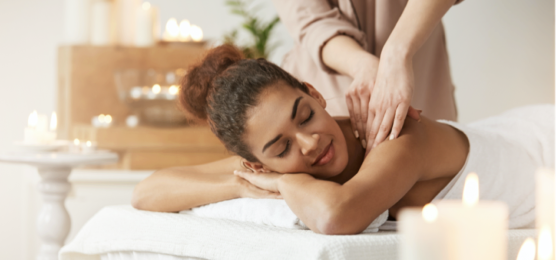What Is a Sports Massage and What Are Its Benefits?
Question:
I recently started training for a triathlon. For some reason my recovery seems to be lagging, but I don’t want to space out my training any more than I already have. The fancy gym offers massages—specifically sports massage and it’s piqued my interest. What I don’t fully understand is how a sports massage is different from any other massage. Is it just marketing lingo? And what legitimate benefits are there, apart from just generally making you feel good and relaxed?
Answer:
You’ll be relieved to know that sports massage is indeed a legitimate thing. So legitimate, in fact, that many university and professional sports teams have massage therapists on their permanent payroll.[1] Generally, sports massage can reduce pain, help prevent injury, and yes, reduce recovery time, according to the American Massage Therapy Association.[2] In fact, one study published in the Journal of Athletic Training found that massage after exercise decreased swelling and reduced delayed-onset muscle soreness by as much as 30 percent.[3]
In addition to enabling a faster recovery, regular sports massage as part of your training regimen can also enhance your overall performance and improve your conditioning. Sports massage is appropriate either before or after workouts or events, although the techniques used will be different. Pre-workout or event, your massage therapist will focus on warming up your muscles and improving the pliability of your muscle tissues.[4] A sports massage after your workout or event will primarily be focused on recovery.
Since recovery is your issue, schedule massages immediately after workouts. You can have a massage therapist meet you at your home, or even come directly to your gym. Discuss your training program and goals with your massage therapist so they can customize your massage to best benefit you. When you first start, your massage therapist may want to see you after workouts 2 or 3 days a week. After a couple of weeks, you can kick back to weekly massages as part of your regular training regimen.
Keep in mind that sports massage uses deep tissue techniques and a relatively fast pace that may not feel entirely comfortable at first. This is not the relaxing massage you may be envisioning. However, the results are cumulative. If you keep with it as part of your regular training, you’ll reap significant benefits in the long-term.[5] Massage reduces your muscle tension and improves your soft tissue function. This increases your range of motion, which makes your movements more efficient and enhances your overall performance.[6]
References:
[1] Health and Fitness Magazine: “Benefits of Massage for Athletes,” http://www.healthfitnessmag.com/Health-Fitness-Magazine/February-2013/Benefits-Of-Massage-For-Athletes/
[2] Id.
[3] Journal of Athletic Training: “Effects of Massage on Delayed-Onset Muscle Soreness, Swelling, Recovery, and Muscle Function,” https://www.ncbi.nlm.nih.gov/pubmed/16284637
[4] Pacific College of Oriental Medicine: “Benefits of Sports Massage,” https://www.pacificcollege.edu/news/blog/2014/07/21/benefits-sports-massage
[5] Health and Fitness Magazine: “Benefits of Massage for Athletes,” http://www.healthfitnessmag.com/Health-Fitness-Magazine/February-2013/Benefits-Of-Massage-For-Athletes/
[6] American Massage Therapy Association: “5 Sports Massage Benefits,” https://www.amtamassage.org/articles/1/News/detail/3574/5-sports-massage-benefits
You Might Be Interested In These, As Well:
Tired of getting calf muscle cramps? Alleviate your pain with a calf muscle massage.
Looking for a way to recover faster from your workout? Learn which massage is best for bodybuilders.
Ready to book your massage?

